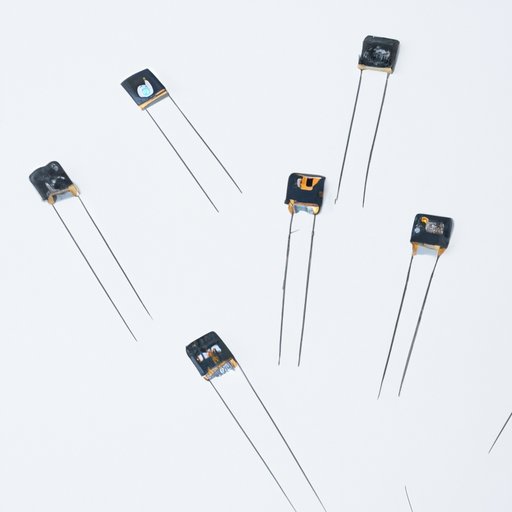Introduction
Photoresistors, also known as light-dependent resistors (LDR), are electronic components that exhibit changes in resistance when exposed to light. The principle of operation of photoresistors is based on the ability of semiconductors to absorb light and generate free charge carriers. Photoresistors are essential in detecting light for various applications, including cameras, security systems, nightlights, and traffic signals. This article aims to provide a comprehensive guide on the working principle, features, and applications of photoresistors.
Working Principle of a Photoresistor
A photoresistor is a passive component that is made of a semiconductor material that conducts electricity. The photoconductivity of semiconductors makes it possible to detect and measure light. When light falls on a photoresistor, the semiconductor material absorbs photons, which generates free electrons and holes. The number of free electrons and holes generated is proportional to the intensity of the light. As a result, the resistance of the photoresistor varies with changes in the intensity of the light.
Comprehensive Guide to Understanding Photoresistors
There are two main types of photoresistors, namely intrinsic and extrinsic. Intrinsic photoresistors are made of a pure semiconductor material, while extrinsic photoresistors are made of impure semiconductor material that has a controlled amount of impurities. The most common type of extrinsic photoresistor is the CdS (Cadmium Sulfide) photoresistor, which is widely used for light detection applications.
The specifications and parameters of a photoresistor include resistance range, dark resistance, spectral response, and rise and fall time. The resistance range of photoresistors varies from a few ohms to several megaohms. The dark resistance is the resistance of the photoresistor in the absence of light. The spectral response is the sensitivity of photoresistors to different wavelengths of light. The rise and fall time of photoresistors is the time it takes for the resistance to change in response to changes in the light intensity.
Applications of Photoresistors
Photoresistors are widely used in real-life scenarios, from simple applications such as nightlights and toy sensors to complex applications such as cameras and traffic signals. In cameras, photoresistors detect the intensity of light, while in traffic signals, photoresistors control the brightness of the LEDs used in the signal. In nightlights, photoresistors control the switching of the light on and off, depending on the surrounding light intensity.
Integrating Photoresistors into Electronics Circuit
Integrating photoresistors into electronics circuits is relatively simple. Connecting a photoresistor to an electrical circuit requires two connections, one to the ground and the other to a voltage source. The output of the photoresistor is taken from the voltage source and the photoresistor junction through a feedback resistor. It is important to choose the feedback resistor such that the voltage range produced by the photoresistor matches the range required by the input device.
Advancements in Photoresistor Technology
Recent advancements in photoresistor technology have resulted in the development of more efficient, low-power, and high-performance photoresistors. One such advancement is the use of nanomaterials in the manufacturing of photoresistors. Nanomaterials are known to exhibit high photoconductivity, making them ideal for designing photoresistors with high sensitivity and low noise.
DIY Light Sensor Using a Photoresistor
Creating a simple light sensor using a photoresistor is relatively straightforward. The materials needed for this project include a photoresistor, an LED, a resistor, and a breadboard. The steps involved in making the sensor include connecting the photoresistor to the breadboard, connecting the LED to the breadboard, and setting up the circuit. The light sensor can be calibrated by adjusting the feedback resistor to fine-tune the sensitivity of the sensor.
Conclusion
In conclusion, photoresistors are essential components in electronics and can be used to detect and measure light in various applications. Understanding the working principle, characteristics, and features of photoresistors is crucial in choosing the right component for a particular application. Advancements in photoresistor technology are promising, and we can expect to see more-efficient, low-power, and high-performance photoresistors in the future.
(Note: Is this article not meeting your expectations? Do you have knowledge or insights to share? Unlock new opportunities and expand your reach by joining our authors team. Click Registration to join us and share your expertise with our readers.)
